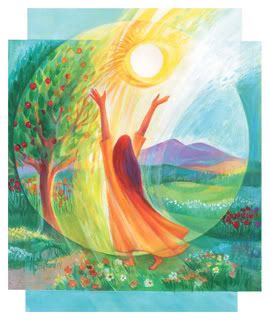Carl Orff: Carmina Burana (fantastic performance)
classicalplus
************
I. Fortuna Imperatrix Mundi
1. O Fortuna 00:00
2. Fortune plango vulnera 02:37
II. Primo vere
3. Veris leta facies 05:27
4. Omnia Sol temperat 09:19
5. Ecce gratum 11:32
III. Uf dem anger
6. Tanz 14:21
7. Floret Silva 16:16
8. Chramer, gip die varwe mir 19:45
9. Reie 23:01
10. Were diu werlt alle min 27:39
IV. In Taberna
11. Estuans interius 28:37
12. Olim lacus colueram 31:04
13. Ego sum abbas 34:53
14. In taberna quando sumus 36:25
V. Cour d'amours
15. Amor volat undique 39:36
16. Diex, nox et Omnia 42:48
17. Stetit puella 45:12
18. Circa mea pectora 46:55
19. Si puer cum puellula 48:53
20. Veni, veni, venias 49:50
21. In trutina 50:50
22. Tempus est iocundum 53:05
23. Dulcissime 55:32
VI. Blanziflor et Helena
24. Ave formosissima 56:17
VII. Fortuna Imperatrix Mundi
25. O Fortuna 58:07
[Video contents compiled by Mauricio Rosas]
************
'Carmina Burana' (Orff)
'Carmina Burana' is a scenic cantata composed by Carl Orff in 1935 and 1936, based on 24 poems from the medieval collection 'Carmina Burana'. Its full Latin title is 'Carmina Burana: Cantiones profanæ cantoribus et choris cantandæ comitantibus instrumentis atque imaginibus magicis' ('Songs of Beuern: Secular songs for singers and choruses to be sung together with instruments and magical images'). It is part of Trionfi, a musical triptych that includes Catulli Carmina and Trionfo di Afrodite. The first and last movements of the piece are called 'Fortuna Imperatrix Mundi' ('Fortune, Empress of the World') and start with the very well known 'O Fortuna.'
'Carmina Burana' (manuscript)
'Carmina Burana', Latin for 'Songs from Benediktbeuern' [Buria in Latin]) is a manuscript of 254 poems and dramatic texts mostly from the 11th or 12th century, although some are from the 13th century. The pieces are mostly bawdy, irreverent, and satirical. They were written principally in Medieval Latin, a few in Middle High German, and some with traces of Old French. Some are macaronic, a mixture of Latin and German or French vernacular.
They were written by students and clergy when the Latin idiom was the lingua franca throughout Italy and western Europe for travelling scholars, universities, and theologians. Most of the poems and songs appear to be the work of Goliards, clergy (mostly students) who satirized the Catholic Church. The collection preserves the works of a number of poets, including Peter of Blois, Walter of Châtillon, and an anonymous poet referred to as the Archpoet.
The collection was found in 1803 in the Benedictine monastery of Benediktbeuern, Bavaria, and is now housed in the Bavarian State Library in Munich. It is considered to be the most important collection of Goliard and vagabond songs, along with the Carmina Cantabrigiensia.
The manuscripts reflect an international European movement, with songs originating from Occitania, France, England, Scotland, Aragon, Castile, and the Holy Roman Empire.
Twenty-four poems in Carmina Burana were set to music by Carl Orff in 1936. His composition quickly became popular and a staple piece of the classical music repertoire. The opening and closing movement 'O Fortuna' has been used in numerous films.
Carl Orff
Carl Heinrich Maria Orff (10 July 1895 – 29 March 1982) was a German composer, best known for his cantata 'Carmina Burana' (1937). In addition to his career as a composer, Orff developed an influential approach toward music education for children.
'O Fortuna' (poem and cantata)
'O Fortuna' is a medieval Latin Goliardic poem written early in the 13th century, part of the collection known as the 'Carmina Burana'. It is a complaint about Fortuna, the inexorable fate that rules both gods and mortals in Roman and Greek mythology.
In 1935–36, 'O Fortuna' was set to music by German composer Carl Orff as a part of 'Fortuna Imperatrix Mundi', the opening and closing movement of his cantata 'Carmina Burana'. It was first staged by the Frankfurt Opera on 8 June 1937. It opens at a slow pace with thumping drums and choir that drops quickly into a whisper, building slowly in a steady crescendo of drums and short string and horn notes peaking on one last long powerful note and ending abruptly. The tone is modal, until the last 9 bars. A performance takes a little over two and a half minutes.
Orff's setting of the poem has influenced and been used in many other works and has been performed by countless classical music ensembles and popular artists. It can be heard in numerous films and television commercials, and has become a staple in popular culture, setting the mood for dramatic or cataclysmic situations. 'O Fortuna' topped a 2009 list of the most-played classical music of the previous 75 years in the United Kingdom.
Carl Orff's 'O Fortuna' in popular culture
In 1935–36, the 13th-century poem 'O Fortuna' was set to music by the German composer Carl Orff for his twenty-five-movement cantata 'Carmina Burana'. The composition appears in numerous films and television commercials and has become a staple in popular culture, setting the mood for dramatic or cataclysmic situations. For instance, it is used to portray the torment of Jim Morrison's drug addiction in the film 'The Doors'. In 1983, Doors' keyboardist Ray Manzarek released his third solo album, 'Carmina Burana', which is an interpretation of the piece in a contemporary framework.
'O Fortuna' has been called "the most overused piece of music in film history", and Harper's Magazine columnist Scott Horton has commented that "Orff’s setting may have been spoiled by its popularization" and its use "in movies and commercials often as a jingle, detached in any meaningful way from its powerful message." Its contemporary usage is often joking or satirical in nature, owing to its oversaturation in popular culture.
.








